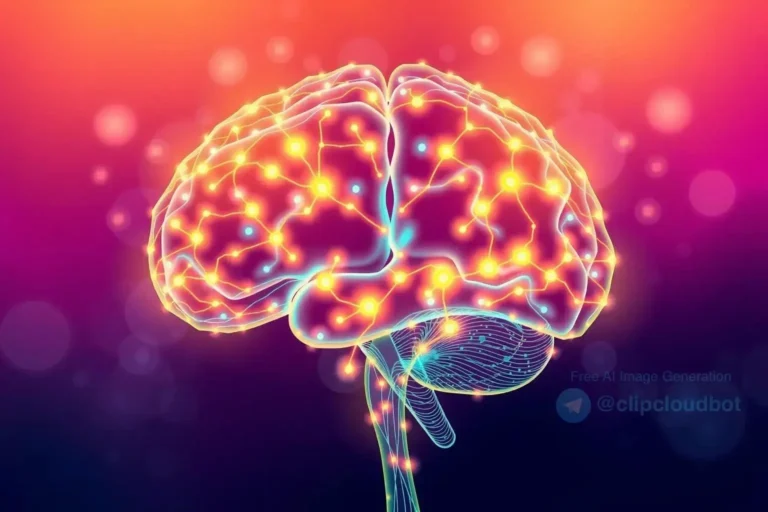Digital Overload: Reclaiming Your Attention and Mental Clarity
In today’s hyper-connected world‚ we’re constantly bombarded with information․ This digital deluge can lead to a state of digital overload‚ impacting our focus‚ productivity‚ and overall well-being․ This constant influx fragments our attention‚ making it difficult to concentrate and leading to cognitive fatigue․ Reclaiming our attention and mental clarity is crucial for navigating the digital age effectively․
Understanding the Problem of Digital Overload
Digital overload‚ also known as information overload‚ describes the overwhelming feeling of being constantly exposed to excessive amounts of digital information․ It’s the state of being bombarded with emails‚ notifications‚ social media updates‚ and a constant stream of online content‚ leaving us feeling mentally exhausted and unable to process it all effectively․ This constant influx of information fragments our attention‚ making it difficult to focus on any one task for an extended period․ Our brains struggle to filter the important from the trivial‚ leading to a sense of being overwhelmed and perpetually behind․
The symptoms of digital overload are varied and can manifest both mentally and physically․ Mentally‚ you might experience difficulty concentrating‚ increased stress and anxiety‚ a feeling of being constantly “on‚” and reduced decision-making abilities․ The constant need to check notifications and stay updated can lead to a fear of missing out (FOMO)‚ further fueling the cycle of overload․ Physically‚ digital overload can contribute to sleep disturbances‚ eye strain‚ headaches‚ and even muscle tension from prolonged screen time․ It can also impact our relationships‚ as we become more engaged with our devices than with the people around us․
This constant state of hyper-stimulation takes a toll on our cognitive functions․ Our brains become less efficient at processing information‚ leading to cognitive fatigue․ This fatigue makes it harder to learn new things‚ remember information‚ and make sound judgments․ The constant distractions also erode our attention spans‚ making it challenging to focus on tasks requiring sustained concentration‚ such as reading‚ writing‚ or deep thinking․ In essence‚ digital overload hinders our ability to engage deeply with the world around us‚ both online and offline․
Understanding the root causes of digital overload is the first step towards managing it effectively․ The pervasive nature of technology‚ coupled with the constant pressure to stay connected‚ creates a perfect storm for information overload․ The fear of missing out‚ the allure of instant gratification‚ and the addictive design of many apps and platforms all contribute to the problem․ Recognizing these factors is crucial for developing strategies to reclaim our attention and cultivate healthier digital habits․
Practical Solutions for Managing Digital Overload
Managing digital overload requires a proactive approach to reclaim your attention and focus․ Start by consciously setting boundaries with your devices․ Establish specific times for checking emails and social media‚ and stick to them․ Disable non-essential notifications to minimize distractions throughout the day․ Consider creating “tech-free” zones in your home‚ such as the bedroom or dining room‚ to encourage real-world interaction and relaxation․ Schedule regular breaks from screens to give your mind a chance to rest and recharge․
Curating your digital environment is another crucial step․ Unsubscribe from unnecessary email lists and unfollow social media accounts that don’t add value to your life․ Be mindful of the content you consume and choose quality over quantity․ Limit your exposure to clickbait articles and sensationalized news‚ focusing instead on information that is relevant‚ informative‚ and uplifting․ Organize your digital files and apps to minimize clutter and streamline your workflow․
Prioritizing tasks and managing your time effectively can also help alleviate digital overload․ Use productivity techniques like time blocking or the Pomodoro method to focus on specific tasks without distractions․ Break down large projects into smaller‚ manageable chunks to avoid feeling overwhelmed․ Learn to say “no” to commitments that drain your energy and time‚ allowing you to focus on what truly matters․
Embracing mindful technology use is key to a healthy digital life․ Before reaching for your phone‚ pause and ask yourself why you’re doing so․ Are you seeking information‚ connection‚ or simply a distraction? Be present in the moment and avoid mindless scrolling․ When engaging with technology‚ do so with intention and purpose․ Remember that technology is a tool‚ and it’s up to you to control how you use it‚ not the other way around․
Cultivating Mindfulness for Healthy Digital Habits
Mindfulness plays a crucial role in developing a healthier relationship with technology․ By cultivating present moment awareness‚ we can begin to observe our digital habits without judgment and make conscious choices about how we engage with our devices․ Mindfulness helps us break free from the automatic‚ reactive patterns that often lead to excessive screen time and digital overload․ It empowers us to become more intentional and discerning in our technology use․
One key aspect of mindful digital use is recognizing the triggers that lead us to reach for our devices․ Are we bored‚ stressed‚ anxious‚ or simply seeking a distraction? By becoming aware of these triggers‚ we can begin to address the underlying emotions and needs that drive our digital habits․ Instead of automatically turning to our phones‚ we can explore alternative coping mechanisms‚ such as taking a walk‚ talking to a friend‚ or engaging in a relaxing activity․
Practicing mindful pauses throughout the day can also help us break the cycle of constant connectivity․ Take a few moments to simply breathe and observe your surroundings․ Notice the sensations in your body‚ the sounds around you‚ and the thoughts passing through your mind․ These brief pauses can help you reconnect with the present moment and reduce the urge to escape into the digital world․
Setting intentions for your technology use can further enhance mindfulness․ Before engaging with a device‚ ask yourself: “What is my purpose for using this technology right now?” Are you seeking information‚ connecting with someone‚ or completing a specific task? By clarifying your intention‚ you can stay focused and avoid getting lost in the endless scroll of social media or the distractions of online content․ This intentional approach allows you to use technology as a tool to support your goals and values‚ rather than letting it control your time and attention․
Exercises for Restoring Attention Span and Mental Clarity
Restoring your attention span and mental clarity requires consistent effort and dedicated practice․ Engaging in focused activities like reading‚ writing‚ or playing a musical instrument can help strengthen your ability to concentrate for extended periods․ Start with shorter durations and gradually increase the time as your focus improves․ Minimize distractions during these activities to create an environment conducive to deep concentration․ These focused practices can help retrain your brain to resist distractions and maintain attention․
Spending time in nature has been shown to have a restorative effect on attention and cognitive function․ Engage in activities like walking‚ hiking‚ or simply sitting quietly in a natural setting․ Observe the sights‚ sounds‚ and smells around you‚ allowing your mind to wander freely․ Nature provides a much-needed respite from the constant stimulation of the digital world‚ allowing your brain to rest and recharge․
Meditation and mindfulness practices are powerful tools for cultivating mental clarity and improving focus․ Regular meditation helps calm the mind‚ reduce mental chatter‚ and enhance your ability to stay present․ Start with short meditation sessions and gradually increase the duration as you become more comfortable with the practice․ Even a few minutes of daily meditation can make a significant difference in your ability to focus and manage distractions․
Practicing single-tasking‚ focusing on one task at a time‚ is crucial for restoring attention span․ Resist the urge to multitask‚ as it divides your attention and reduces your overall effectiveness․ When working on a task‚ dedicate your full attention to it and avoid switching between different activities․ This focused approach will improve your concentration and allow you to complete tasks more efficiently․ By incorporating these exercises into your routine‚ you can reclaim your attention‚ enhance mental clarity‚ and navigate the digital world with greater focus and ease․






